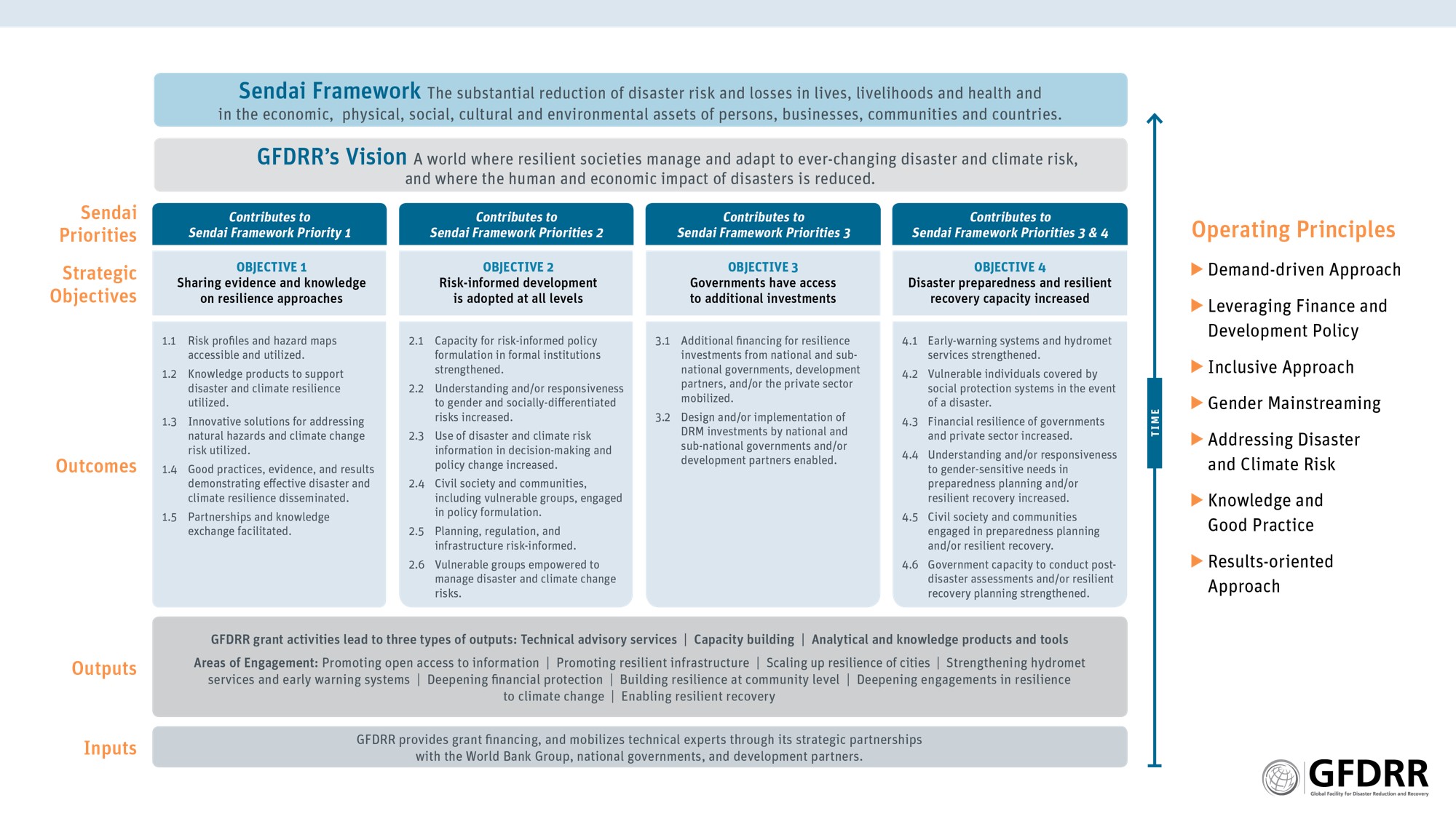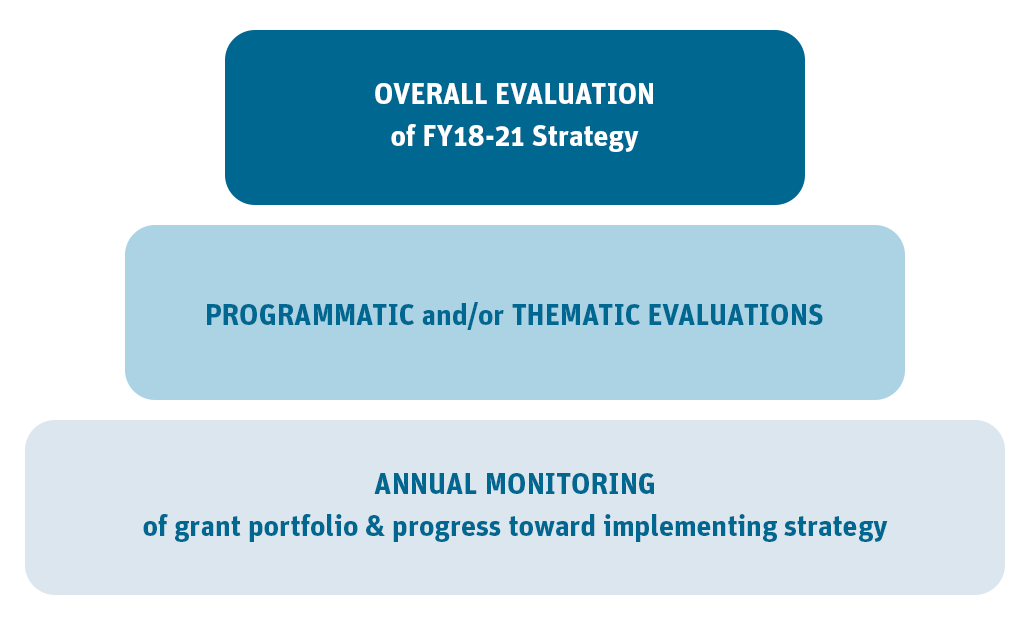GFDRR uses monitoring, evaluation, and a focus on results to drive improved performance. The data we collect is used for monitoring and evaluating trends across the portfolio; learning which activities are working well and which are not; understanding country-level impacts; informing management decisions; and strengthening accountability. GFDRR’s monitoring and evaluation (M&E) work is guided by its Partnership Council (PC) through a Technical Advisory Group for M&E.
GFDRR’s Monitoring and Evaluation Approach
GFDRR’s fiscal year 2018-21 Strategy puts forth the vision and mission of the Facility. It also includes eight key areas of engagement and a set of operating principles for the Facility. Accompanying this strategy is a Logical Framework explaining the logical chain through which GFDRR intends to achieve its vision (see Figure 1). GFDRR’s monitoring and evaluation (M&E) approach is driven by this logic, and is based on a results framework defining expected outputs, outcomes, and indicators for measuring progress on each of these achievements. The Facility’s monitoring system is designed to track grant output- and outcome-level results that can be aggregated to monitor trustee and Facility-level performance. This in turn supports monitoring progress toward achieving GFDRR’s objectives and FY18-21 strategy.

Figure 1: GFDRR Logical Framework
GFDRR uses evaluation to verify the results of its activities; better understand attributable resilience impacts; and learn lessons to inform future activities. GFDRR evaluation activities have included funding window-level (programmatic) evaluations; country- and regional-focused evaluations; and thematic-focused evaluations. The scale of evaluations undertaken depend on the overall ambition and interest of GDFRR’s CG.
Figure 2 illustrates GFDRR’s approach, with evaluation building upon monitoring and reporting activities.

Figure 2: GFDRR M&E Pyramid
Reporting Results
To ensure transparency and accountability, GFDRR reports its results in an Annual Report and donor-specific reports. Results are also shared through GFDRR communications materials, notably through its Results in Resilience series.
